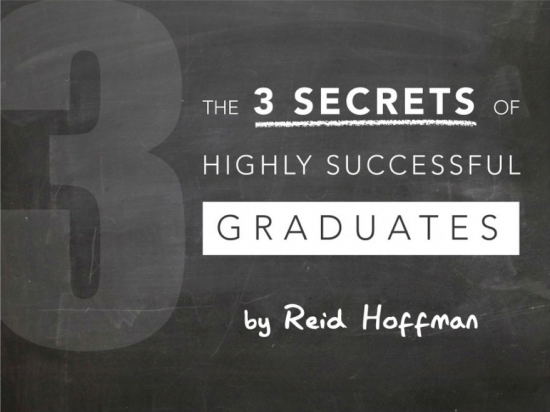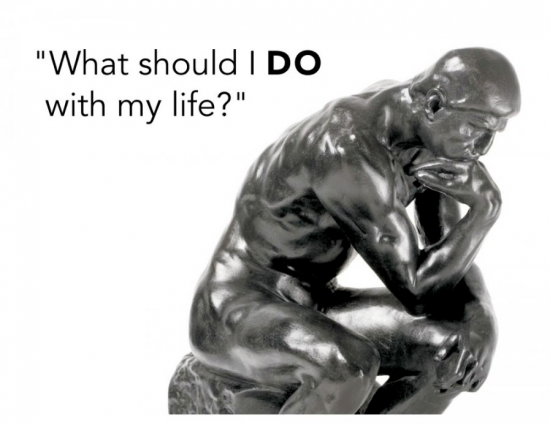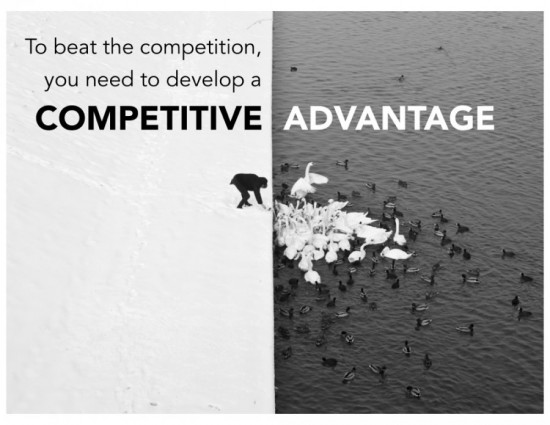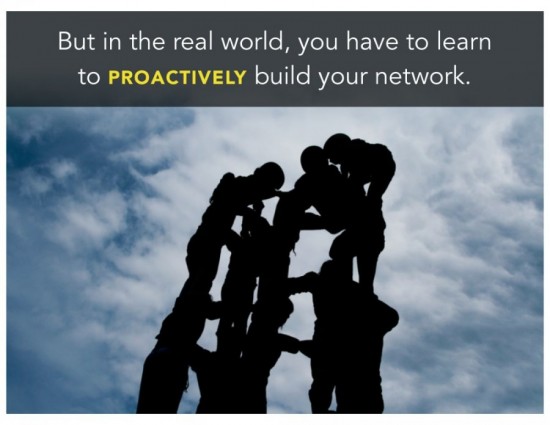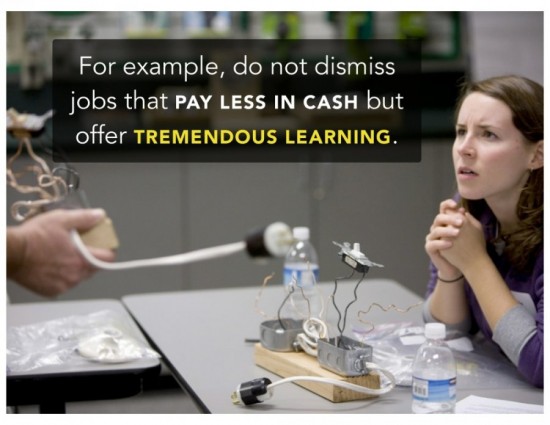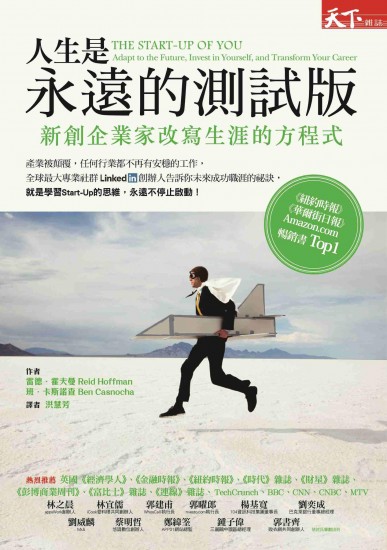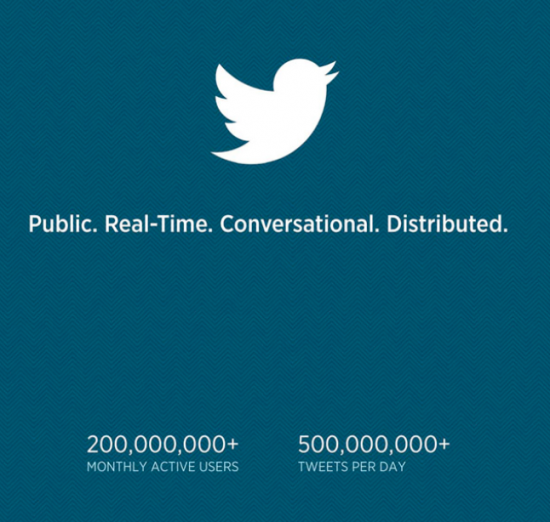
在每週一次的「創業 CEO」系列,我們討論一個創業者如何教會自己成為一位偉大的 CEO,因為歷史上最偉大的創業公司,往往都是由這樣的人在領導。
打開 Alexa 全球前二十五大網站排行榜,除了非營利的 Wikipedia 以及正準備要跟著阿里巴巴掛牌的淘寶之外,剩下還未公開上市的就只剩三個網站 ── Twitter、Wordpress 以及俄國的 VK.com。有趣的是這三個站都是社群,其中又以 Twitter 跑得最前面,不但擠身 Global Top 10,也可以說是繼 Facebook 與 LinkedIn 之後,全球第三大 Social Network。(註)
當老大與老二在兩年內雙雙 IPO 之後,Twitter 走向上市之路似乎無可避免 ── 上市公司有籌碼的優勢,可以用來吸引人才、併購成長引擎,加上 Facebook、LinkedIn 與 Twitter 都在灣區,會讓這個壓力更為顯著。果不其然,一個月前傳出 Twitter 將要 IPO,而 S-1 (公開說明書) 也終於在數天前正式出爐。
關於這份 S-1 裡的財務數字,已經有不少高手寫了解讀 ── 我在 Stern 的企業財務老師,在價值評估界有相當高地位的 Professor Damodaran 發表的分析尤其精闢,有興趣的人不妨花 20 分鐘時間拜讀。
今天的篇幅,我想要花在該文件裡 CEO 可以學習的另一個區塊,關於 Twitter 價值訴求與策略的描述,尤其是那與 Facebook 之間的比較。雖然兩者都是 Social Networks,但事實上他們在「中心思想」上有著相當顯著的不同。今天的案例會有點長,因為 S-1 裡面的文字我決定用原文,讓大家感受一下原汁原味,但如果你能耐心把它讀完,相信可以對設定公司的核心價值及策略,有更進一步的體會。
價值訴求
任何賺廣告錢的企業都有兩組人要服務 ── 使用者與廣告主,但除了這兩組人,去年上市的 Facebook 在 S-1 中加上了對開發商的價值訴求,而到了今年的 Twitter,還多出了第四組 ── 對數據服務夥伴的訴求。
順序上,我們可以看到 Facebook 與 Twitter 都把使用者放在第一位,開發商放在第二位,廣告主則是在第三位。在 Twitter 的案例裡面,數據夥伴是最後一位。
使用者
面對使用者,Twitter 的價值訴求是:
- Sharing Content with the World — Users leverage our platform to express themselves publicly to the world, share with their friends and family and participate in conversations. The public, real-time nature and tremendous global reach of our platform make it the content distribution platform of choice for many of the world’s most influential individuals and organizations, as well as millions of people and small businesses.
- Discovering Unique and Relevant Content — Twitter’s over 215 million MAUs, spanning nearly every country, provide great breadth and depth of content across a broad range of topics, including literature, politics, finance, music, movies, comedy, sports and news.
- Breaking News and Engaging in Live Events — Users come to Twitter to discover what is happening in the world right now directly from other Twitter users. On Twitter, users tweet about live events instantly, whether it is celebrities tweeting to their fans, journalists breaking news or people providing eyewitness accounts of events as they unfold. Many individuals and organizations choose to break news first on Twitter because of the unique reach and speed of distribution on our platform. As a result, Twitter is a primary source of information and complements traditional media as a second screen, enhancing the overall experience of an event by allowing users to share the experience with other users in real time. We believe this makes Twitter the social soundtrack to life in the moment.
- Participating in Conversations — Through Twitter, users not only communicate with friends and family, but they also participate in conversations with other people from around the world, in ways that would not otherwise be possible. In addition to participating in conversations, users can simply follow conversations on Twitter or express interest in the conversation by retweeting or favoriting.
相對來說,Facebook 的價值訴求是:
- Connect with Your Friends — With 845 million MAUs worldwide, our users are increasingly able to find and stay connected with their friends, family, and colleagues on Facebook.
- Discover and Learn — We believe that users come to Facebook to discover and learn more about what is going on in the world around them, particularly in the lives of their friends and family and with public figures and organizations that interest them.
- Express Yourself — We enable our users to share and publish their opinions, ideas, photos, and activities to audiences ranging from their closest friends to our 845 million users, giving every user a voice within the Facebook community.
- Control What You Share — Through Facebook’s privacy and sharing settings, our users can control what they share and with whom they share it.
- Experience Facebook Across the Web — Through apps and websites built by developers using the Facebook Platform, our users can interact with their Facebook friends while playing games, listening to music, watching movies, reading news, and engaging in other activities.
- Stay Connected with Your Friends on Mobile Devices — Through the combination of our mobile sites, smartphone apps, and feature phone products, users can bring Facebook with them on mobile devices wherever they go.
比較兩者之間,可以清楚看出雙方中心思想的差異。Facebook 主打的是與朋友間的聯繫,而 Twitter 則是向全世界廣播。Facebook 要幫助你控制隱私權,Twitter 則要讓每個人都能播送即時新聞 (Breaking News)。有趣的是從 Web 原生的 Facebook 把「用手機與朋友聯繫」設定為主要價值訴求,但在 IPO 前其實一半用戶會使用 Facebook Mobile。當初從簡訊對傳衍生出的 Twitter 一直都有很高的行動比率,目前為止已到達 75%,但 Twitter 卻不把 Mobile 認為是核心訴求。所以從這個角度看,價值訴求的描述也涵蓋了公司意圖說服大家的成分。
開發商
再來,面對開發商,Twitter 的價值訴求是:
- Distribution Channel — Platform partners use Twitter as a complementary distribution channel to expand their reach and engage with their audiences. Publishers and media outlets contribute content created for other media channels to Twitter and tweet content specifically created for Twitter. We provide platform partners with a set of widgets that they can embed on their websites and an API for their mobile applications to enable Twitter users to tweet content directly from those properties. As our users engage with this content on Twitter, they can be directed back to our partners’ websites and applications.
- Complementary Real-Time and Relevant Content — Twitter enables platform partners to embed or display relevant Tweets on their online and offline properties to enhance the experience for their users. Additionally, by enhancing the activity related to their programming or event on Twitter, media outlets can drive tune-in and awareness of their original content, leveraging Twitter’s strength as a second screen for television programming. For example, during Super Bowl XLVII, over 24 million Tweets regarding the Super Bowl were sent during the game alone and 45% of television ads shown during the Super Bowl used a hashtag to invite viewers to engage in conversation about those television ads on Twitter.
- Canvas for Enhanced Content with Twitter Cards — Platform partners use Twitter Cards to embed images, video and interactive content directly into a Tweet. Twitter Cards allow platform partners to create richer content that all users can interact with and distribute.
- Building with Twitter Content — Platform partners leverage Tweets to enhance the experience for their users. Developers incorporate Twitter content and use Twitter tools to build a broad range of applications. Media partners incorporate Twitter content to enrich their programming and increase viewer engagement by providing real-time Tweets that express public opinion and incorporate results from viewer polls on Twitter.
相對的,Facebook 的價值訴求是:
- Personalized and Social Experiences — We enable Platform developers to create better products that are personalized and social and that offer new ways for our users to engage with friends and share experiences across the web and on mobile devices. For example, a Facebook user can visit the Pandora website and immediately begin listening to a personalized radio station that is customized based on the bands the user Likes on Facebook.
- Social Distribution — We enable Platform developers to reach our global user base and use our social distribution channels to increase traffic to their apps and websites.
- Payments — We provide an online payments infrastructure that enables Platform developers to receive payments from our users in an easy-to-use, secure, and trusted environment.
在這裡我們再次看到明顯的對比。雙方唯一的共同點是「Distribution」,也就是協助開發商推廣的「通路」角色。除此之外,Twitter 強調的是即時、多媒體、豐富的內容來源 (Tweets),而 Facebook 強調的則是個人化與金流服務。
Facebook 的策略是緊緊抓牢「大眾上網入口」的戰略位置,因此它希望透過 Open Graph 與金流服務平行整合各種垂直網站,吸取更多關於使用者的資訊,並且在現金流動站上最後一哩的位置。
Twitter 的策略是成為「即時新聞的 No.1 來源」,因此它把自己化為無形,鼓勵垂直服務拿它的內容去加值,成為很多人不能或缺的關鍵資源。
廣告主
面對廣告主,Twitter 的訴求是:
- Unique Ad Formats Native to the User Experience –Our Promoted Products, which are Promoted Tweets, Promoted Accounts and Promoted Trends, provide advertisers with an opportunity to reach our users without disrupting or detracting from the user experience on our platform.
- Targeting — Our pay-for-performance Promoted Products enable advertisers to reach users based on many factors. Importantly, because our asymmetric follow model does not require mutual follower relationships, people can follow the users that they find most interesting. These follow relationships are then combined with other factors, such as the actions that users take on our platform, including the Tweets they engage with and what they tweet about, to form a user’s Interest Graph. We believe a user’s Interest Graph produces a clear and real-time signal of a user’s interests, greatly enhancing our targeting capability.
- Earned Media and Viral Global Reach — The public and widely distributed nature of our platform enables Tweets to spread virally, potentially reaching all of our users and people around the world. Our users retweet, reply to or start conversations about interesting Tweets, whether those Tweets are Promoted Tweets or organic Tweets by advertisers. An advertiser only gets charged when a user engages with a Promoted Tweet that was placed in a user’s timeline because of its promotion. By creating highly compelling and engaging ads, our advertisers can benefit from users retweeting their content across our platform at no incremental cost.
- Advertising in the Moment — Twitter’s real-time nature allows our advertisers to capitalize on live events, existing conversations and trending topics. By using our Promoted Products, advertisers can create a relevant ad in real time that is shaped by these events, conversations and topics.
- Pay-for-Performance and Attractive Return on Investment — Our advertisers pay for Promoted Tweets and Promoted Accounts on a pay-for-performance basis. Our advertisers only pay us when a user engages with their ad, such as when a user clicks on a link in a Promoted Tweet, expands a Promoted Tweet, replies to or favorites a Promoted Tweet, retweets a Promoted Tweet for the first time, follows a Promoted Account or follows the account that tweets a Promoted Tweet. The pay-for-performance structure aligns our interests in delivering relevant and engaging ads to our users with those of our advertisers.
- Extension of Offline Advertising Campaigns — Twitter advertising complements offline advertising campaigns, such as television ads. Integrating hashtags allows advertisers to extend the reach of an offline ad by driving significant earned media and continued conversation on Twitter.
Facebook 的訴求則是:
- Reach — Facebook offers the ability to reach a vast consumer audience of over 800 million MAUs with a single advertising purchase.
- Relevance — Advertisers can specify that we show their ads to a subset of our users based on demographic factors and specific interests that they have chosen to share with us on Facebook or by using the Like button around the web. We allow advertisers to select relevant and appropriate audiences for their ads, ranging from millions of users in the case of global brands to hundreds of users in the case of smaller, local businesses.
- Social Context — We believe that the recommendations of friends have a powerful influence on consumer interest and purchase decisions. We offer advertisers the ability to include “social context” with their marketing messages. Social context is information that highlights a user’s friends’ connections with a particular brand or business, for example, that a friend Liked a product or checked in at a restaurant. We believe that users find marketing messages more engaging when they include social context.
- Engagement — We believe that the shift to a more social web creates new opportunities for businesses to engage with interested customers. Any brand or business can create a Facebook Page to stimulate an ongoing dialog with our users.
在這裡,我們可以看到雙方同時強調「Reach」,也就是品牌廣告主在意的到達率。不過 Facebook 是直白的說「拿錢來就給你 8 億人」,Twitter 則比較委婉的說「好廣告 (內容) 在我們這裡會散播到全世界」。雙方也都強調精準,不過 Twitter 強調的是「興趣」,也就是他們追蹤的人物與品牌,而 Facebook 由於擁有較多關於使用者的資料,像是他們的學歷、工作、平常對什麼東西按了讚,因此可以提供更多元的精準設定。
除此之外,雙方強調的廣告產品特色就非常不一樣了。Twitter 訴求的是原生的型態、即時、效能與投報率,以及往電視等線下媒體延伸的可能,而 Facebook 強調的則是朋友推薦 (Social Context) 以及與品牌間的互動。但更進一步分析,你會發現 Twitter 提及的原生、即時、效能,都是 Facebook 已經做到的價值訴求,而 Facebook 提及的品牌追蹤更是 Twitter 率先帶起的風潮。所以雙方的特色其實是重疊的,但 Facebook 的廣告主或許多半已認為原生、即時、效能是先決條件,而 Twitter 廣告主也對追蹤品牌習以為常,因此並不值得特別提到。
倒是 Facebook 提及的 Social Context,也就是你的朋友 XXX 也喜歡這個故事,也對這個東西按讚,這種能夠吸引消費者注意,大幅提昇效益的廣告型態,是 Twitter 較無法提出的訴求,也是長期而言 Twitter 必須考慮填補的巨大鴻溝。
成長策略
如果價值訴求描述是點出現在已經提供給種種用戶的重點功能,則成長策略則是未來將要主力投資補強的項目,從這裡可以一窺一家企業規劃中的短、中期發展方向。
Twitter 在 S-1 中載明的成長策略如下:
- Users — We believe that there is a significant opportunity to expand our user base. Industry sources estimate that as of 2012 there were 2.4 billion Internet users and 1.2 billion smartphone users, of which only 215 million are MAUs of Twitter.
- Geographic Expansion. We plan to develop a broad set of partnerships globally to increase relevant local content on our platform and make Twitter more accessible in new and emerging markets.
- Mobile Applications. We plan to continue to develop and improve our mobile applications to drive user adoption of these applications.
- Product Development. We plan to continue to build and acquire new technologies to develop and improve our products and services and make our platform more valuable and accessible to people around the world. We also plan to continue to focus on making Twitter simple and easy to use, particularly for new users.
- Platform Partners — We believe growth in our platform partners is complementary to our user growth strategy and the overall expansion of our platform.
- Expand the Twitter Platform to Integrate More Content. We plan to continue to build and acquire new technologies to enable our platform partners to distribute content of all forms.
- Partner with Traditional Media. We plan to continue to leverage our media relationships to drive more content distribution on our platform and create more value for our users and advertisers.
- Advertisers — We believe we can increase the value of our platform for our advertisers by enhancing our advertising services and making our platform more accessible.
- Targeting. We plan to continue to improve the targeting capabilities of our advertising services.
- Opening our Platform to Additional Advertisers. We believe that advertisers outside of the United States represent a substantial opportunity and we plan to invest to increase our advertising revenue from international advertisers, including by launching our self-serve advertising platform in selected international markets.
- New Advertising Formats. We intend to develop new and unique ad formats for our advertisers. For example, we recently introduced our lead generation and application download Twitter Cards and Twitter Amplify, which allows advertisers to embed ads into real-time video content.
相對的,Facebook 的成長策略是:
- Expand Our Global User Community — We continue to focus on growing our user base across all geographies, including relatively less-penetrated, large markets such as Brazil, Germany, India, Japan, Russia, and South Korea. We intend to grow our user base by continuing our marketing and user acquisition efforts and enhancing our products, including mobile apps, in order to make Facebook more accessible and useful.
- Build Great Social Products to Increase Engagement — We prioritize product development investments that we believe will create engaging interactions between our users, developers, and advertisers on Facebook, across the web, and on mobile devices. We continue to invest significantly in improving our core products such as News Feed, Photos, and Groups, developing new products such as Timeline and Ticker, and enabling new Platform apps and website integrations.
- Provide Users with the Most Compelling Experience — Facebook users are sharing and receiving more information across a broader range of devices. To provide the most compelling user experience, we continue to develop products and technologies focused on optimizing our social distribution channels to deliver the most useful content to each user by analyzing and organizing vast amounts of information in real time.
- Build Engaging Mobile Experiences — We are devoting substantial resources to developing engaging mobile products and experiences for a wide range of platforms, including smartphones and feature phones. In addition, we are working across the mobile industry with operators, hardware manufacturers, operating system providers, and developers to improve the Facebook experience on mobile devices and make Facebook available to more people around the world. We believe that mobile usage is critical to maintaining user growth and engagement over the long term.
- Enable Developers to Build Great Social Products Using the Facebook Platform — The success of our Platform developers and the vibrancy of our Platform ecosystem are key to increasing user engagement. We continue to invest in tools and APIs that enhance the ability of Platform developers to deliver products that are more social and personalized and better engage users on Facebook, across the web, and on mobile devices. Additionally, we plan to invest in enhancing our Payments offerings and in making the Payments experience on Facebook as convenient as possible for users and Platform developers.
- Improve Ad Products for Advertisers and Users — We plan to continue to improve our ad products in order to create more value for advertisers and enhance their ability to make their advertising more social and relevant for users. Our advertising strategy centers on the belief that ad products that are social, relevant, and well-integrated with other content on Facebook can enhance the user experience while providing an attractive return for advertisers. We intend to invest in additional products for our advertisers and marketers while continuing to balance our monetization objectives with our commitment to optimizing the user experience.
首先比較使用者成長策略,可以發現雙方的重點都放在地理擴張、行動,以及產品的不斷改善方面。不過在產品改善的細節上,我們又可以看出雙方中心思想的明顯差異。Facebook 希望的是增加黏著度,企圖用「動人」的使用體驗不斷佔據你生命中越來越多的成分。Twitter 則希望維持簡單易用,並且將引入新科技來達到這個目標。
針對開發商的成長策略,Twitter 希望提供更多內容,尤其是跟傳統媒體結盟,來增加內容的質與量,這呼應著它針對開發商的價值訴求,也符合它成為內容供給者的長期策略。Facebook 則強調要提昇 API,讓第三方網站可以透過其平台建造更個人化的服務,並且要加強金流的使用,這也符合他們殖民全網域的長期策略。
針對廣告主,Twitter 強調的是更精準的行銷、開放北美以外的客戶,以及新的廣告型態,而 Facebook 則是一整段很空的虛話。就像前面價值訴求所比較的一樣,Twitter 相較於 Facebook 無論是可用於設定目標的用戶屬性,或是 Social Context,都居於劣勢,所以需要加強投資追趕,而廣告主所在地的擴張以及更多廣告型態,也是非常合理的努力方向。相較之下,Facebook 顯然相當滿意自己目前的廣告產品,認為只要能讓使用者、開發商更黏在它的平台上,廣告營收就會成長,因此不需要多說些什麼。
Lessons Learned
細細閱讀這兩個社群網站的公開說明書,可以看出雙方對於己方優勢的認知,從那邊進一步推測出他們的市場定位,以及未來的戰略布局。希望今天的分析有幫助你見賢思齊,好好思考自己公司的價值訴求與成長策略,有什麼可以向兩強學習的地方。
___
註:我比較不把 YouTube 歸類在社群網站,它的 DNA 比較接近 90% 影音觀賞,10% 社群互動。

